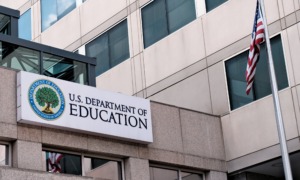As 2,000 after-school workers gathered in Dallas earlier this week for the annual National AfterSchool Association convention, they immediately understood the convention theme “Rising to the Challenge.”
The out-of-school time field faces major challenges this year. The White House has proposed cutting all federal funding for 21st Century Community Learning Centers, the roughly $1.1 billion program serving 1.6 million children in low-income areas across the nation.
And youth in the United States are facing an increasing opportunity gap, according to many presenters at the National At-Risk Youth Conference in Savannah, Georgia, early in March.
The National AfterSchool Association is mobilizing its members to send a message to Congress about the value of after-school programs, said Gina Warner, president and CEO of the association.
“We’re going to start to talk about who it impacts,” she said. For example, how will working parents manage if after-school funding dries up?
“I’m a working parent myself,” she said.
The goal is to provide research, data and stories about the impact of out-of-school time programs on the lives of children, parents and communities.
“You don’t know what you’ve got til it’s gone,” Warner said.
Ben Trentelman, director of operations for the Utah Afterschool Network, who attended the NAA convention, said 1,150 after-school employees in Utah could lose their jobs if 21st Century funding is cut. The program serves 9,870 kids in150 high-poverty communities in Utah, he said.
[Related: Supporting Those Who Support Homeless Youth]
His 6-year-old daughter attends a 21st Century program at North Star Elementary in Salt Lake City. “We have very strong data that shows the effectiveness of these programs,” Trentelman said.
“If you call into question the effect of 21st Century programs, you’re calling into question the effect of all after-school programs,” he said, calling 21st Century one of the best models, generating the best data.
The president’s budget proposal said 21st Century programs had not been shown to have impact.
Warner called the language of the proposal “audacious.”
She said NAA members are going to go home and talk about how the program provides a return on investment.
Trentelman said members will also be talking to state legislators. A move to cut federal funds causes states to look at the programs and in some cases to initiate their own cuts, he said.
“It’s already causing impacts in programs,” he said. “We’ve heard from concerned parents. If federal funding is cut, we need to have a state response to keep these programs sustainable.”
Participants at both conferences also discussed ways to share data about after-school programs among states to combat the “silo” approach to data.
Brad Lademann, resource center coordinator of the Missouri AfterSchool Network, said more than half the programs the network works with are funded through 21st Century grants.
Many are in rural areas of the state, and their loss would have a huge impact, he said.
“There are not other options in small towns” for after-school programming where kids can be safe, continue learning and have [enrichment] opportunities that they may not get at school or home,” he said.
Federal funding was really “the elephant in the room” at the NAA convention, he said.
More related articles:
Trump Proposal Zeros Out 21st Century Program; Advocates See Devastation for Needy Families
Reaching LGBT Youth With Support, Mentoring and a Message That ‘It Gets Better’
When Schools and Nonprofits Collaborate with Faith-based Organizations































